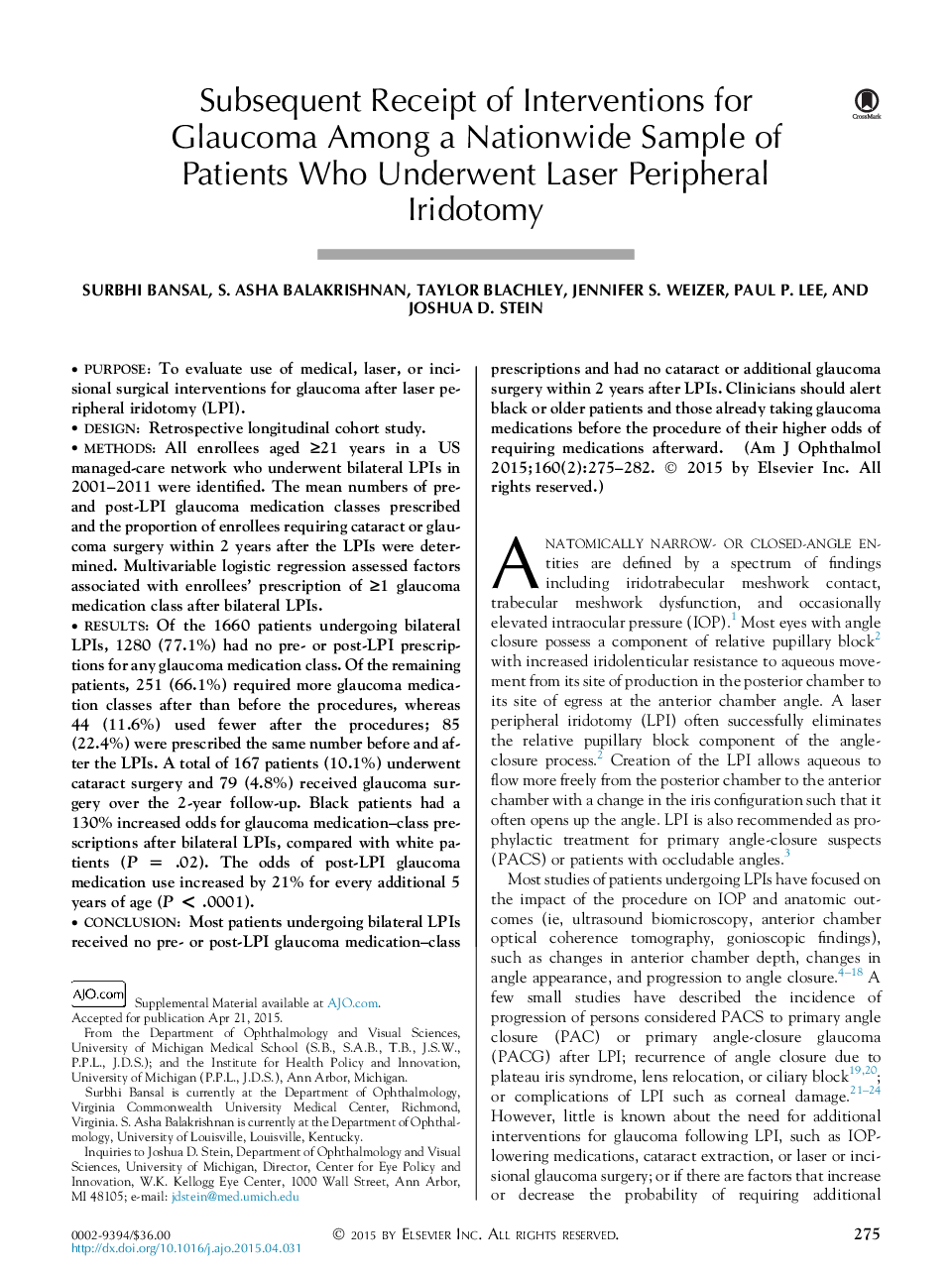| Article ID | Journal | Published Year | Pages | File Type |
|---|---|---|---|---|
| 6195262 | American Journal of Ophthalmology | 2015 | 12 Pages |
PurposeTo evaluate use of medical, laser, or incisional surgical interventions for glaucoma after laser peripheral iridotomy (LPI).DesignRetrospective longitudinal cohort study.MethodsAll enrollees aged â¥21 years in a US managed-care network who underwent bilateral LPIs in 2001-2011 were identified. The mean numbers of pre- and post-LPI glaucoma medication classes prescribed and the proportion of enrollees requiring cataract or glaucoma surgery within 2 years after the LPIs were determined. Multivariable logistic regression assessed factors associated with enrollees' prescription of â¥1 glaucoma medication class after bilateral LPIs.ResultsOf the 1660 patients undergoing bilateral LPIs, 1280 (77.1%) had no pre- or post-LPI prescriptions for any glaucoma medication class. Of the remaining patients, 251 (66.1%) required more glaucoma medication classes after than before the procedures, whereas 44 (11.6%) used fewer after the procedures; 85 (22.4%) were prescribed the same number before and after the LPIs. A total of 167 patients (10.1%) underwent cataract surgery and 79 (4.8%) received glaucoma surgery over the 2-year follow-up. Black patients had a 130% increased odds for glaucoma medication-class prescriptions after bilateral LPIs, compared with white patients (P = .02). The odds of post-LPI glaucoma medication use increased by 21% for every additional 5 years of age (P < .0001).ConclusionMost patients undergoing bilateral LPIs received no pre- or post-LPI glaucoma medication-class prescriptions and had no cataract or additional glaucoma surgery within 2 years after LPIs. Clinicians should alert black or older patients and those already taking glaucoma medications before the procedure of their higher odds of requiring medications afterward.
